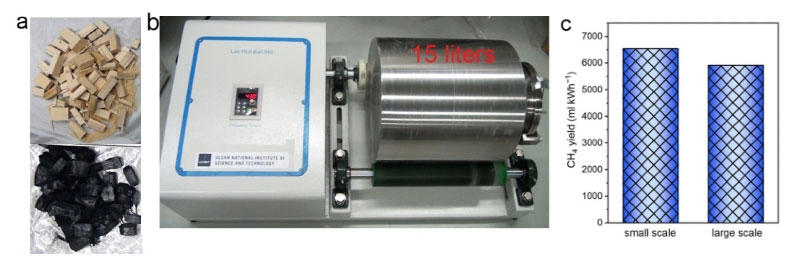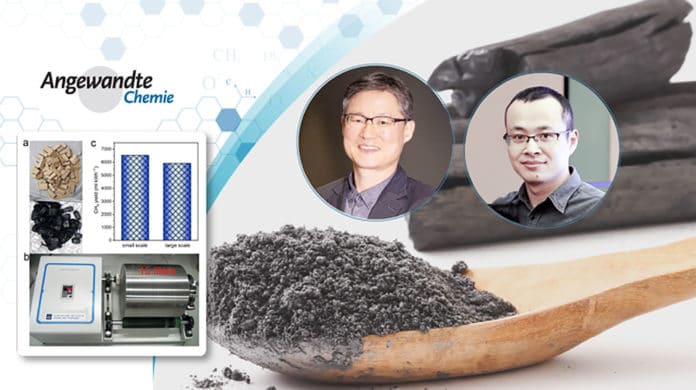Carbon hydrogasification is the slowest reaction among all carbon-involved small-molecule transformations. Using a readily available ball-milling device, UNIST scientists have developed an innovative hydrocarbon manufacturing route that results in a faster reaction rate and a new synthesis route.
They used the mechanical collision created by the ball-milling technique to decompose charcoal to produce methane. This method can also enable the production of methane from coal.
As scientists used natural wood-derived charcoal to produce methane (CH4), this method has tremendous commercial potential.
The method demonstrated an enhanced reaction rate by up to 4 orders of magnitude during tests compared to the traditional thermal method. At the same time, the reaction exhibited very high selectivity (99.8% CH4 versus 80% under thermal conditions) with a cobalt catalyst.

What causes this extreme reaction rate?
The continuous activation of reactive carbon species via mechanochemistry causes this extreme increase in reaction rate. The high selectivity is intimately related to the activation at low temperatures, at which higher hydrocarbons are difficult to form.
Scientists suggest that this work could advance studies of carbon hydrogasification and other solid-gas reactions.
Scientists noted, “Our work introduces a new method for carbon hydrogasification, with high rates at low temperatures. The synthesized hydrocarbons are carbon-neutral. The all cycle, from biomass production to mechanochemical carbon hydrogasification (CHG) and methane utilization, is a net-zero carbon dioxide emission process and might be partially net-negative.”
Professor Jong-Beom Baek in the School of Energy and Chemical Engineering at UNIST said, “This is an important prospect to replace the limited carbon-positive natural gas reserves and prevent global warming. Our findings can be used as a non-oxidative method to regenerate coke-poisoned catalysts, which is frequently required in large-scale industrial production. This method not only avoids aggregation when burning the carbon due to the highly exothermic nature of the reaction but also reduces the catalyst size at the same time.”
Journal Reference:
- G.-F. Han, P. Zhang, P. Scholzen, et al., “Extreme Enhancement of Carbon Hydrogasification via Mechanochemistry,” Angew. Chem. Int. Ed., (2022). DOI: 10.1002/anie.202117851
